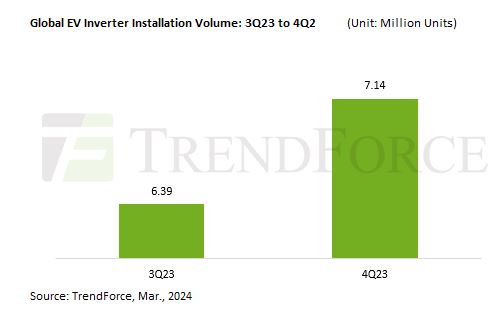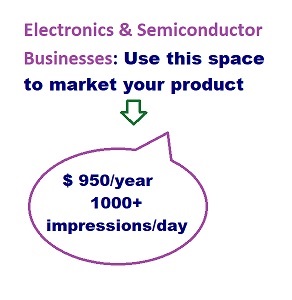Global installation volume of EV Inverter reached 7.14 million units in 4Q23
Date: 25/03/2024
TrendForce finds in its latest study that the global installation volume of EV inverters surged to 7.14 million units in the fourth quarter of 2023, marking a substantial 12% increase from the previous quarter. This growth is attributed to the rising sales of Electric Vehicles (Evs), with Battery Electric Vehicles (BEVs) emerging as the primary demand driver for EV inverters.

The trends and findings shared by TrendForce includes:
BEVs Lead the Charge: Inverters for BEVs constituted approximately 53% of all EV inverter installations in the fourth quarter of 2023, encompassing a wide spectrum of EV types including Hybrid Electric Vehicles (HEVs), Plug-in Hybrid Electric Vehicles (PHEVs), and Fuel Cell Vehicles (FCVs). BEVs notably contributed to over 60% of the market share, driving the expansion of the EV inverter market.
Technological Advancements: The transition from traditional Si-IGBTs to Silicon Carbide (SiC) chips in inverter power components is enhancing voltage breakdown capability and conversion efficiency. This trend improves vehicle range but also facilitates the introduction of high-voltage EV models for more efficient charging. In the fourth quarter of 2023, inverters installed in vehicles with voltages exceeding 550V accounted for 9% of the total, indicating a steady upward trend.
Rise of SiC Chip Adoption: Inverters equipped with SiC power chips comprised 15% of total inverter installations in the fourth quarter. To meet the escalating demand for SiC chips, numerous automakers have forged direct partnerships with upstream power semiconductor companies. To give an example, Li Auto's collaboration with UNT exemplifies a strategic initiative to delve into SiC chip design and research, showcasing the industry's commitment to advancing technological frontiers.


